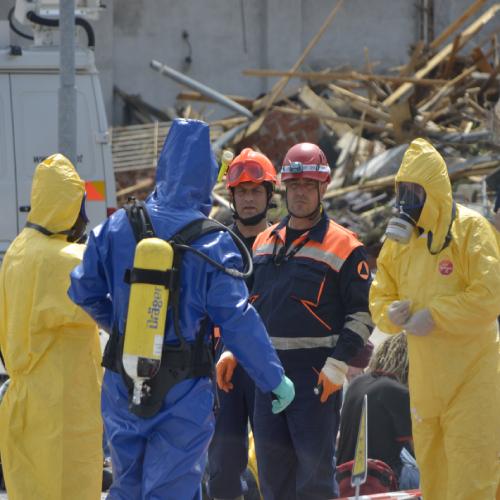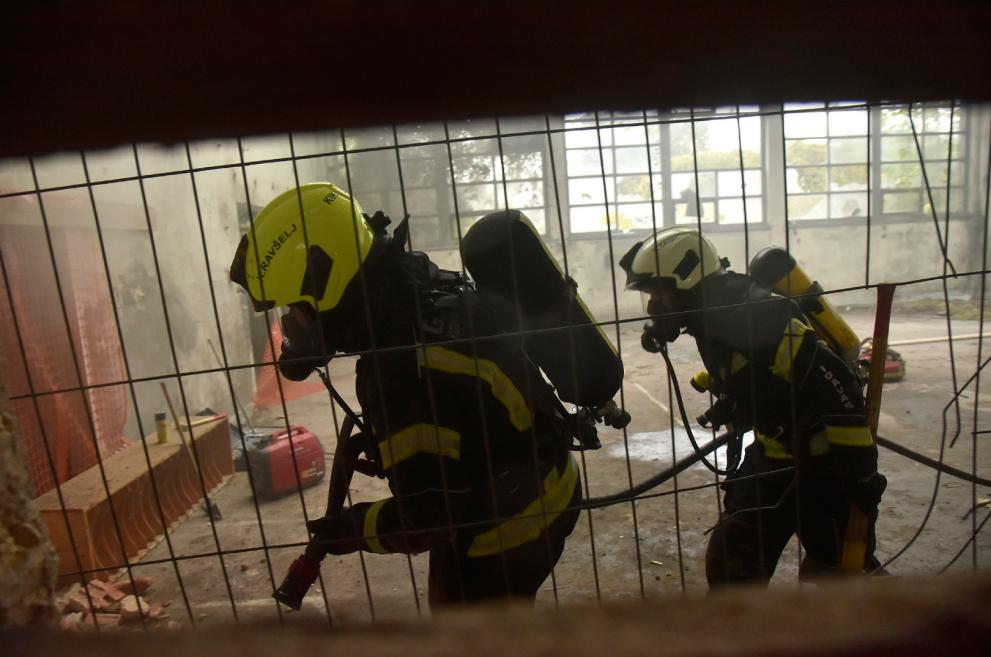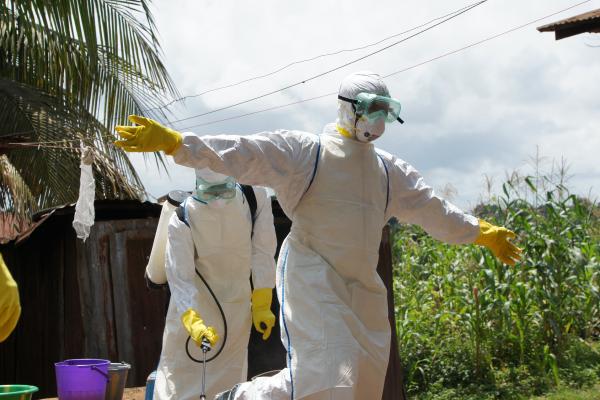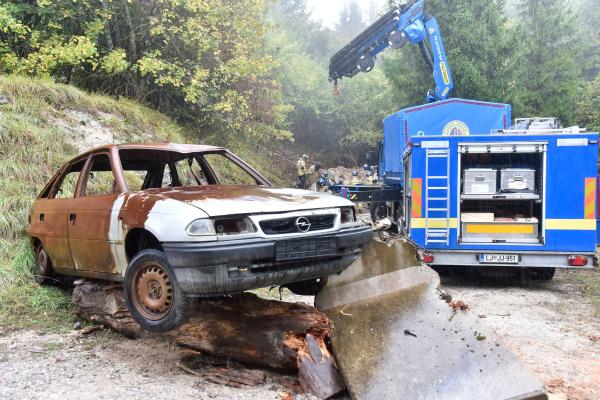
Nuclear and Radiological Accidents
Nuclear and radiological incidents are cross-boundary, human induced risks that can only be contained if all safety and security measures are in place.
Nuclear safety ensures the safe operation of nuclear facilities in the EU. It is complemented by radiation protection and radioactive waste management. Nuclear safety covers the whole life cycle of a nuclear installation, including nuclear reactor safety; fuel safety; waste management; plant decommissioning; and emergency preparedness. Failure in managing any nuclear safety requirements can lead to the contamination of extensive areas of land and bodies of water with consequences on the health of entire populations not limited to the country of origin of the contamination.
At the start of 2020, the EU had 109 nuclear reactors in operation in 13 EU countries producing approximately 25 % of the EU’s total electricity, according to Eurostat.

Nuclear installation safety systems are designed with significant redundancy, such as the duplication of critical components and functions of the system as a ‘backup’. This makes the system more reliable.
These safety systems have ensured that, although incidents have occurred, the escalation of incidents have been prevented such that no major accidents have ever taken place. There is an extremely low probability of nuclear accidents occurring, but they have a high impact if they do occur. Nuclear power plants are subject to strict safety, safeguarding, and security checks. Nuclear emergency situations are not limited to power plants, they may also relate to Nuclear security deals with the physical protection and control of nuclear materials and installations, especially against intentional malicious acts. The EU has set up a system of nuclear safeguards under the Euratom Treaty that include nuclear safeguards, non-proliferation, combating illicit trafficking, reference materials for nuclear safeguards, safety, and security.
The revised Euratom ‘Basic Safety Standards Directive’ lays out strengthened requirements on emergency preparedness and response to nuclear accidents.
Despite the low likelihood of a nuclear accident, there is still the potential for them to occur. A serious nuclear incident in Europe would affect several countries simultaneously and therefore would require international cooperation to respond to this cross-border disaster.
Radiological accidents are accidents that involve radioactive material, but do not necessarily involve nuclear processes. Radiological accidents can occur wherever radioactive materials are being used, stored, or transported. Overall, the impact of radiological accidents is more limited and localised compared to nuclear accidents.
Radiological accidents can be further exacerbated by ageing of nuclear facilities, CBRN terror attacks and climate change.
The 2020 Joint Research Centre (JRC) PESETA IV Report reveals that as a result of the climate crisis, more frequent, severe heatwaves are expected in Europe which could increase the risk of a severe nuclear accident due to the lack of availability of water for reactor cooling. If there is a rise in global temperatures of 3 °C above pre-industrial times, nuclear power production would significantly reduce in southern Europe due to less water availability for production and cooling.
Since the signing of the Euratom treaty in 1957, MS have been obliged to monitor radiation levels and share the data with the European Commission. The JRC supports the EU efforts in preparation for radiological emergencies by running systems for the automatic exchange of radiological information, and conducting research into environmental radioactivity (whether naturally present or man-made).
Largely based on national disaster risk assessments for EU Member and Civil Protection Mechanism Participating States, the ‘Overview of natural and man-made disaster risks the European Union may face’ aims to foster better understanding of disaster risks facing Europe.
Nuclear critical events have transboundary implications. This transboundary element is especially relevant in the EU where, even though only 13 Member States (MS) had operational nuclear power reactors (in 2020), 25 MS included nuclear accident risks in their national risk assessments.
Due to the revisions to the nuclear safety procedures following the Fukushima nuclear accident, the EU has developed a European response to potential nuclear accidents. Europe is well protected by collaborative legislation and tools to monitor and share data, and to enact coordinated responses between MS in the event of a nuclear accident. The EU promotes the highest standards of nuclear safety across Europe and beyond (DG ENER website).

Despite the high nuclear safety, Europe does have vulnerabilities to nuclear accidents. Europe contains 13 countries which do not have nuclear facilities (as of 2020), but which do border countries with nuclear facilities. This means that non-nuclear European countries are vulnerable to nuclear accidents.
One such cross-boundary implication of a nuclear accident is nuclear fallout being carried by the wind across territorial borders. This is a public health concern in areas other than the site of the accident, such as in the Fukushima and Chernobyl accidents.


The EU promotes the highest safety standards for all types of civilian nuclear activity, including power generation, research, and medical use. The stress tests carried out on EU nuclear facilities following the 2011 Fukushima nuclear accident improved Europe’s nuclear safety and robustness in the face of extreme natural events to the highest standards possible. The revised Euratom ‘Basic Safety Standards Directive’ lays out strengthened requirements on emergency preparedness and response to nuclear accidents.
The EU has adopted a unanimous approach to nuclear energy operations in all MS, which ensures that nuclear safety, safeguarding, and security is carried out and enforced to the highest standards. EU Science Hub. The JRC supports the Commission in fulfilling the obligations set up by the Euratom Treaty (European Atomic Energy Community) in so far as nuclear research, training and education, and radiation protection concerns. In line with the Euratom Treaty, the JRC runs Euratom Research and Training Programme direct and indirect actions undertaken by multi-partner consortia for five years, from 1 January 2021 to 31 December 2025.
Several emergency arrangements exist in the event of a nuclear accident, for example the European Community Urgent Radiological Information Exchange (ECURIE) and the European Radiological Data Exchange Platform (EURDEP). ECURIE was set up following the Chernobyl nuclear disaster in 1986 to make early-notification and reliable radiological information available to MS if any nuclear accidents were to occur. EURDEP collects and monitors these data from 39 participating countries in almost real-time. Additionally, the European Instrument for International Nuclear Safety Cooperation (INSC) supports the improvement of nuclear safety around the world.
In 2021, the Commission created this INSC to support the promotion of nuclear safety culture and radiation protection including the safe management of spent nuclear fuels and radioactive waste in the EU and the safeguarding of nuclear materials in non-EU and non-European countries.
The G7 Nuclear Safety and Security Working Group provides technical information and policy advice on the safety and security of the uses of peaceful nuclear technology. The World Institute for Nuclear Security (WINS) is a non-governmental organisation that works closely with the International Atomic Energy Agency (IAEA) to achieve its goal of addressing all security issues related to nuclear and other radioactive facilities, activities, and materials.